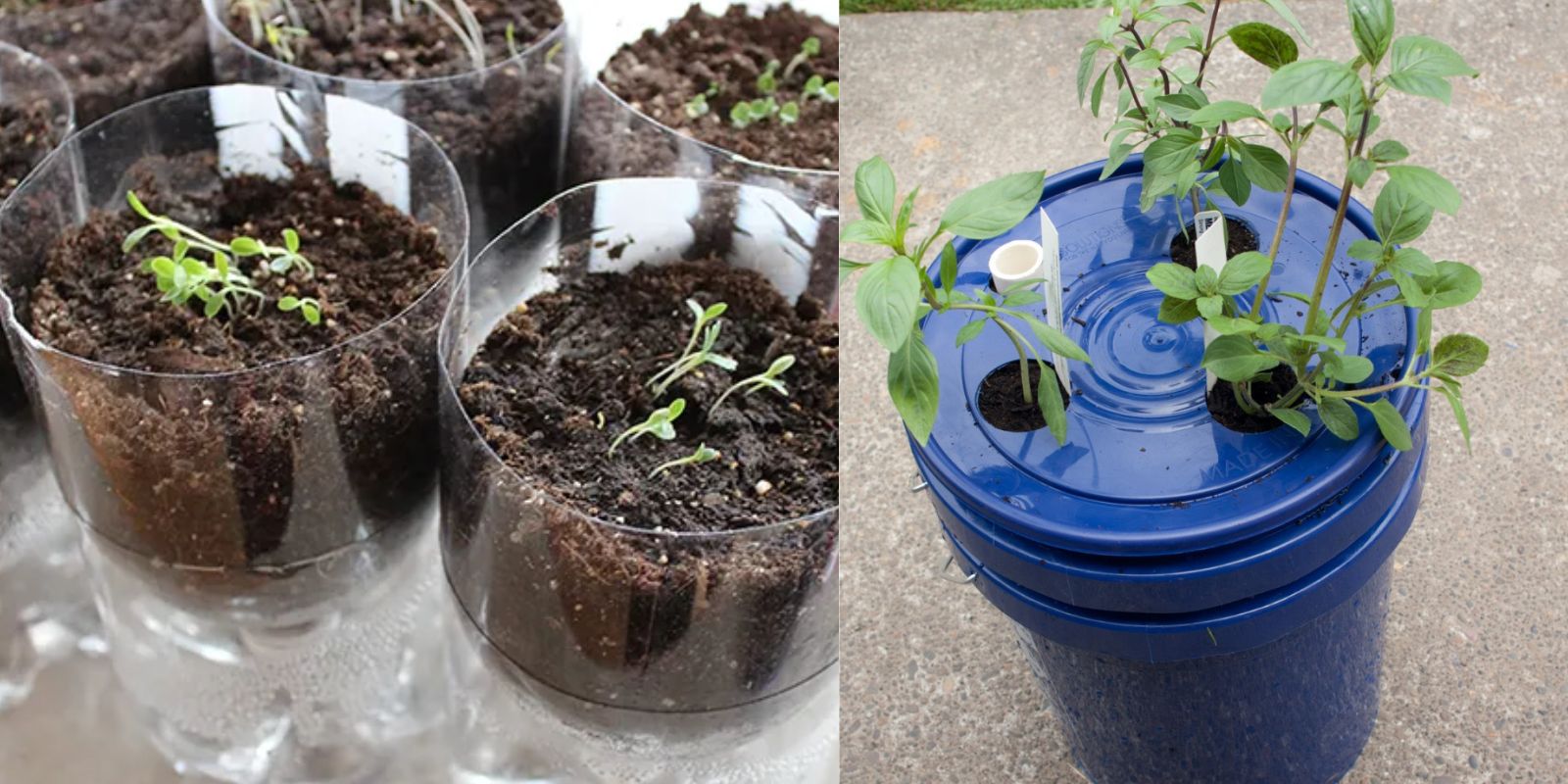Basil is a popular herb known for its fragrant aroma and versatile culinary uses. However, keeping it well-hydrated can sometimes be a challenge, especially for busy gardeners. A self-watering planter is the perfect solution to ensure your basil thrives with minimal effort. In this detailed guide, we’ll show you how to create a self-watering basil planter using simple materials and provide tips on maintaining it for maximum growth.
Benefits of a Self-Watering Planter
Before diving into the process, let’s explore why a self-watering planter is a fantastic choice:
- Consistent Moisture: Ensures the basil gets a steady water supply, which is critical for healthy growth.
- Water Efficiency: Reduces water wastage by delivering moisture directly to the roots.
- Low Maintenance: Ideal for people with busy schedules or those who travel frequently.
- Sustainable Gardening: Reuses materials like plastic bottles, contributing to an eco-friendly approach.
Materials Needed
To create your self-watering basil planter, you’ll need:
- A plastic bottle or container (1-2 liters works best)
- Cotton string or a wick
- Scissors or a utility knife
- Potting soil
- Basil plant or seeds
- Optional: Decorative tape or paint for aesthetics
Step-by-Step Instructions
1. Prepare the Bottle
Start by selecting a plastic bottle that fits your space and needs. A 1-liter soda bottle is ideal for a single basil plant.
- Cut the Bottle: Use scissors or a utility knife to cut the bottle into two parts. The bottom part will hold water, and the top part will serve as the soil container.
- Make a Hole: Drill or cut a small hole in the bottle cap to thread the wick through.
2. Set Up the Wick
The wick is a critical component that draws water from the reservoir to the soil.
- Thread a cotton string or fabric strip through the hole in the bottle cap.
- Ensure the wick is long enough to reach the water in the bottom half of the bottle while extending into the soil.
3. Assemble the Planter
- Fill the bottom half of the bottle with water, leaving some space to prevent spillage.
- Invert the top half of the bottle and place it into the bottom half. The wick should hang freely into the water.
- Check that the setup is stable and the wick is properly positioned.
4. Add Soil and Plant
- Fill the top part with potting soil, leaving about an inch of space from the rim.
- Plant basil seeds or transfer a small basil plant into the soil.
- Gently press the soil around the plant to secure it.
5. Position Your Planter
Place the planter in a location with plenty of sunlight. Basil requires at least 6-8 hours of direct sunlight daily.
6. Maintain the Planter
- Check the water reservoir regularly and refill it as needed.
- Avoid overfilling to prevent waterlogging.
- Prune your basil plant to encourage bushy growth and prevent flowering, which can reduce leaf production.
Tips for Success
- Choose the Right Soil: Use a well-draining potting mix to avoid soggy conditions.
- Monitor Growth: As the basil grows, ensure the planter remains stable and the roots have enough space.
- Decorate Your Planter: Add a personal touch by painting or wrapping the bottle with decorative tape.
Advantages of Growing Basil in a Self-Watering Planter
- Improved Plant Health: Consistent watering prevents issues like yellowing leaves and root rot.
- Convenience: Spend less time watering and more time enjoying fresh basil in your dishes.
- Space-Saving: Perfect for small spaces, balconies, or indoor gardening.
Common Mistakes to Avoid
- Overfilling the Reservoir: Excess water can lead to fungal growth.
- Using the Wrong Wick: Ensure the wick is absorbent enough to transport water effectively.
- Ignoring Sunlight Requirements: Basil needs ample sunlight to thrive.
- Skipping Regular Checks: Always monitor the water level and the health of the plant.
Why Make a Self-Watering Planter?
Creating a self-watering planter is not just a practical gardening hack; it’s also a sustainable way to grow your own herbs. This project is beginner-friendly and perfect for those who want to start small in their gardening journey.
Final Thoughts
A self-watering basil planter is a fantastic addition to any home garden. It simplifies plant care, reduces water usage, and ensures your basil thrives all season long. Plus, it’s a great way to repurpose materials and contribute to eco-friendly gardening practices.
Get Started Today! 🌱 Have you made your own self-watering planter? Share your tips or photos with us! Let’s inspire each other to grow fresh and sustainable gardens.
#DIYPlanter #SelfWatering #BasilLovers #GardeningHacks #UrbanGardening #SustainableLiving #GrowYourOwnHerbs

